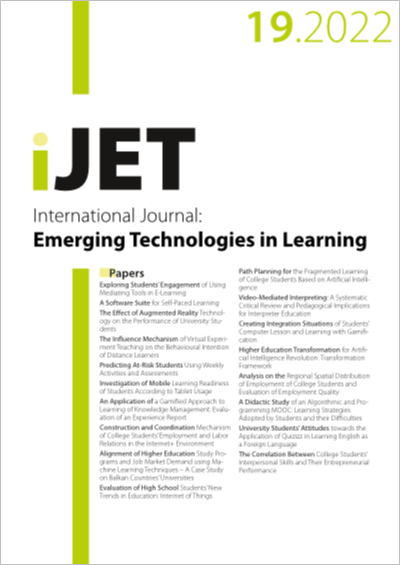The Influence Mechanism of Virtual Experiment Teaching on the Behavioural Intention of Distance Learners
DOI:
https://doi.org/10.3991/ijet.v17i19.34469Keywords:
virtual experiment teaching, distance learners, learning behavioural intention, influence mechanismAbstract
Distance education is restricted by the physical isolation of time and space. Without the ability to communicate face-face with teachers, the learning experience of learners is reduced, which has an impact on their behavioural intention. Virtual labs offer students the chance to be free from the constraints of time and place and conduct the required experiments at anytime and anywhere. To explore the influence mechanism of virtual experiment teaching on the behavioural intention of distance learners from three aspects, including self-efficacy, collaborative learning and teacher guidance, a questionnaire is designed, and the mediating effects of perceived ease-of-use (PEOU) and perceived usefulness (PU) on the relationship between virtual experimental teaching and the behavioural intention of distance learners are analysed. Results show that self-efficacy, collaborative learning and guidance from teachers have a notable frontage influence to the behavioural intention of students. PEOU and PU act as different mediators on the relationship between self-efficacy, collaborative learning and guidance from teachers and the behavioural intention of students. Conclusions obtained from this study can be used to improve the design of the learning process of a virtual experimental platform for related subjects and the promotion of the platform. Moreover, these will be of great reference value to the reform and practice of teaching methods for the practical links.
Downloads
Published
How to Cite
Issue
Section
License
Copyright (c) 2022 Yijun Shou

This work is licensed under a Creative Commons Attribution 4.0 International License.


